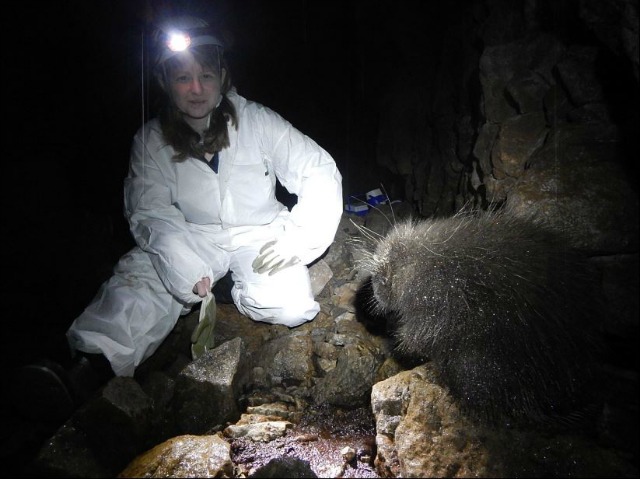[PHOTO CREDIT: DF MCALPINE/NEW BRUNSWICK MUSEUM]
We were recently out to the caves again to check for hibernating bats. Unfortunately we didn’t see any bats at the 3 caves that we visited. We did, however, find this very friendly porcupine that posed for pictures. Porcupines do not hibernate, but they do make their home in several of our study caves during the winter. The caves are consistently at ~5˚C during the winter which is very cozy when compared to the typical Canadian winter outside the caves! The porcupines occasionally leave the caves to eat the bark off of surrounding trees, and leave ample evidence of their visits in the form of dung and shed quills. A variety of fungi grow on these dung piles which act as a source of fungal spores that get distributed around the caves. In the past, I have detected these spores on live bats hibernating in these caves. The fungus that causes white-nose syndrome does not grow above 20˚C so porcupines and other warm-blooded animals cannot get infected. During winter, bats drop their body temperature to the ambient temperature where they are hibernating. This is accompanied by a big drop in their metabolic rate which allows them to survive the whole winter without eating!
[PHOTO CREDIT: KAREN VANDERWOLF/NB MUSEUM]





